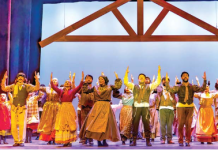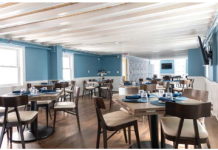By Barbara Ardolino
For those of you who read my first article on “Understanding Style,” welcome back! For those of you just joining the party, let me give you a recap. My name is Barbara. I am a personal stylist, who has lots of thoughts and opinions on style, more importantly, personal style. I am writing an interactive series of articles on “Discovering Your Personal Style.” (I know I’m using the word style a lot but it is the essence of the articles.)
I will repeat this time and time again: You have to understand what works for you and your body type before you start shopping. Play up your assets and downplay your “situation(s).” As I discussed in the last article, shopping can be overwhelming and frustrating if you do not understand what you can wear and what you cannot. It is that simple! Once you understand your silhouette and proportion and, of course, what you like, you’ve got it! As you become more confident in your dressing, your individual taste(s) will emerge. You will really start to hone in on your “signature style.”
I have spent many hours poring through stylebooks, extracting information I deemed useful (trust me, there is a lot of useless information out there) and working with countless women and all of their unique body types. What I came up with is a style strategy for women using what I have named as “The Formula.“ I put together a handout for the women who attended my workshops and I am going to share this information with you.
The Formula: FFP – Fit, Fabric, Proportion.
They are three very important criteria. Fit: Good fit means that clothes skim the body. They do not hug you like a stuffed sausage or hang on you like a sack of potatoes. A good tailor will become your best friend. Fabric: The two most important qualities are weight and movement. If fabric is too stiff, it will look boxy. If it is too thin, it may cling to every bulge. If it is too shiny, it can add pounds. I refer often to drape and fluidity when working with my clients. Proportion: I cannot say enough about the last but very important criteria. You may have everything going with the fit and the fabric but if the proportion is off, everything is off. Proportion is a “balancing act.”
The key to proportion is understanding your body type. Elongating your legs, minimizing your breasts, dealing with your derriere or being “height challenged” are some of the issues we encounter. If you understand your body type and address it properly, you can make yourself look as long and lean as possible.
Take a look at the following body types and find the one – more than one category will be true for most women – that describes you. Learn and understand what this component of the formula means for you.
Long-Waisted with Short Legs: The desire is to create longer looking legs. Wear high-waisted garments. From the waist down think monochromatic – belts, pants, shoes, high heels will add to the lengthening of the legs.
Short-Waisted with Long Legs: This is a great problem to have! The desire is to lower the waistline. Wear lower-waisted pants and longer tops or tunics.
Big Busted: The desire is to reduce the impact of your bust. This is done by lengthening the torso and the neck. Wear basic, unadorned tops with an open neck or a long narrow collar. Avoid voluminous and large pattern tops.
Small Busted: If you are small all over then being small chested should not be a concern. It is only when there is a disproportion with the rest of your body that the problem arises. Fitted tops with breast pockets, gathers, ruffles, shirring or ruching near or over the bustline are advised.
The Tummy: The objective is to downplay your mid-body by drawing attention to your face and/or legs. Longer tops like cardigans and tunics or longer jackets are great when paired with tapered bottoms. Skirts and pants should be flat front, no pleats! Avoid double-breasted anything or anything belted with a waistband.
The Big Derriere and/or Big Hips: Wear dark colors on bottom. Flat front, slightly tapered skirts to or around the knee (think pencil skirt). The overall length is determined by the proportions of the skirt to your leg. Pants should be flat front, slightly boot cut (to balance out the body). Tops should emphasize the shoulders and de-emphasize your hips! You are creating balance by emphasizing the top (shoulders) and bottom (legs).
The Height Challenged: Your objective is to lengthen. Think vertical line. Monochromatic palette with heels. High-waisted skirts, pants and dresses. Avoid anything with horizontal lines. It will make you look even shorter.
I pulled the body types from the pages of A Guide to Quality, Taste & Style by Tim Gunn. He doesn’t use fruit (apple and pear) or geometric figures (inverted triangle, rectangular) to describe a woman’s body. He uses real body types that you can mix and match within the categories. according to your needs. Thank you, Mr. Gunn.
I hope you have found this article informative. It will be an important source in your quest to (re)discover your personal style. The next article will be on The Fall ’12 season’s trends and how to make them work for you. Plus I will share my list of “12 style tips” that are just good to know.
Again, please send any and all questions to me. I will try to address all of them.
xo
b
 Barbara Ardolino is a personal stylist. Since starting her company, Fab Over 40, she has been helping women understand their sense of style and what looks best on them. She is writing a five-part series on personal style for The Two River Times™. Look for each installment of the series on the third Friday of each month in the Style section. Please reach Barbara by email with your questions or comments at FabOver40Style@yahoo.com.
Barbara Ardolino is a personal stylist. Since starting her company, Fab Over 40, she has been helping women understand their sense of style and what looks best on them. She is writing a five-part series on personal style for The Two River Times™. Look for each installment of the series on the third Friday of each month in the Style section. Please reach Barbara by email with your questions or comments at FabOver40Style@yahoo.com.














